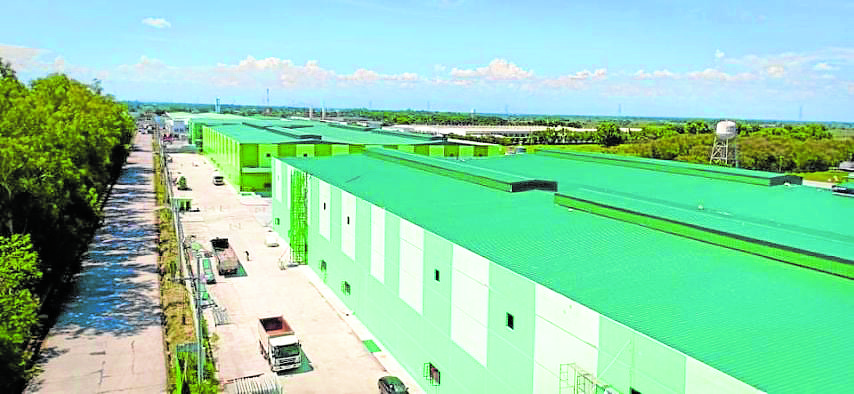The COVID-19-induced interruptions have altered the immediacy in which retailers must innovate to remain relevant.
Given the emergence of a lockdown economy and the continued growth of the e-commerce sector, retailers have started to shift to the online space and partner with delivery platforms. In our view, this should result in the retailers’ aggressive adoption of an omni-channel approach, which requires an adequate and versatile network of logistics infrastructure. As such, mall operators and retailers are now compelled to aggressively firm up partnerships with logistics firms and warehouse developers to reach last mile deliveries and capture opportunities in the middle of a pandemic.

Cold chain assets
The demand for cold storage facilities in Metro Manila, Pampanga, and the Cavite-Laguna-Batangas (Calaba) corridor remains underserved. We project demand for these facilities to increase as restaurants and supermarkets (including black grocery concepts) serve the demand for delivery of perishable, ready-to-cook or -eat food items. This will likely be complemented by a rising demand for pharmaceuticals. In our view, developers should look for areas in the peripheries of business districts that can be viable locations for these facilities. The New Clark City in Tarlac and Taguig City are among the feasible locations as these are likely to be developed by the government as agro-industrial zones.
The demand for cold chain assets is also likely to expand upon the rollout of the COVID-19 vaccines.
Technological innovations, industry 4.0 practices
Demand for warehousing will likely be driven by the growth of e-commerce especially in Metro Manila, which covers more than 30 percent of the Philippines’ annual economic output. We believe that developers should aggressively modernize their facilities by adopting Industry 4.0 practices such as automation of facilities, and adoption of advanced robotics and conveyor systems. Developers should also consider investing in cloud data systems, which should ease storage and retrieval of items in warehouses.
Fringe options with lower rental rates
Lease rates of traditional warehouses located near major business districts in Metro Manila are higher compared to those located in the fringe areas. This is partly due to higher land values in core locations and the facilities’ proximity to integrated communities that house malls, offices and condominiums. Facilities in the fringe areas such as Valenzuela, Quezon City, and Parañaque are offered at relatively cheaper rates.
In our view, retailers of non-essential items looking for cheaper options should explore warehouses in Valenzuela and Parañaque as well as urban areas outside of Metro Manila such as Pampanga, Bulacan, and Tarlac.
‘Hub and spoke’, ‘flex’ warehouses
Colliers believes that developers should look at the viability of opening small-scale storage facilities near major business districts to satisfy the rising demand for same-day deliveries. Landlords should also consider proximity to transportation centers, seaports and airports in northern Quezon City, Manila, and Parañaque areas. We encourage developers to explore the feasibility of implementing co-warehousing strategies which we are seeing in the United States and Europe. The demand for small scale and “flex” warehouses will likely grow as retailers implement omni-channel strategies.
Vacant mall spaces as fulfillment centers
In the third quarter of 2020, average vacancy of malls across Metro Manila rose to 12.5 percent due to the slowdown in brick-and-mortar retail space absorption. We project vacancy to further peak at 14 percent by the end of 2020, from only 9.8 percent in 2019. Mall operators with large vacancies should consider alternative uses for their space. Converting vacant mall spaces into microwarehouses provides an alternative use of vacant spaces in the near term. Demand for these facilities may also be driven by mall tenants that are expanding their online presence and are aiming to meet demands for last-mile deliveries.
Growth of microwarehouses
We see a growth in demand for warehousing and storage options as retailers continue to tap the e-commerce market to take advantage of the growing popularity of online shopping. In response to the potential increase in warehouse demand and higher retail vacancy, selected mall operators have decided to convert certain retail spaces into microwarehouses. A couple of developers are exploring the concept and are eyeing certain submarkets and business districts within Metro Manila. As I mentioned previously, the conversion and repurposing of real estate assets will be the name of the game beyond 2021.
Stable property segment
In my previous columns, I stressed that certain property sectors may likely recover ahead of other segments. One of these is the logistics sector, which has remained the most active amid the pandemic and lockdowns imposed across the Philippines. Colliers Philippines believes that despite the global economic downturn and market uncertainties, logistics stands out as a property segment of relative stability and opportunity. We encourage property developers to be more aggressive in responding to emerging trends and in future-proofing their assets.
#realestateblogph | #realestateblogphpropertynews | #REBPH | #realestate | #warehouse | #warehousingboom | #coldchainstorage
Article and Photo originally posted by Inquirer last January 16, 2021 3:05am and written by Joey Roi Bondoc. Minor edits have been made by REBPH to cater to its own readers.







More Stories
Vista Land Celebrates 50 Years with Sandiwa: An Event Honoring Leadership, Legacy, and the Filipino Dream of Homeownership
Vista Land Celebrates Love Month in Ilocos Region
Vista Land Bridges Cebuano Heritage and Progress with Valencia by Vista Estates